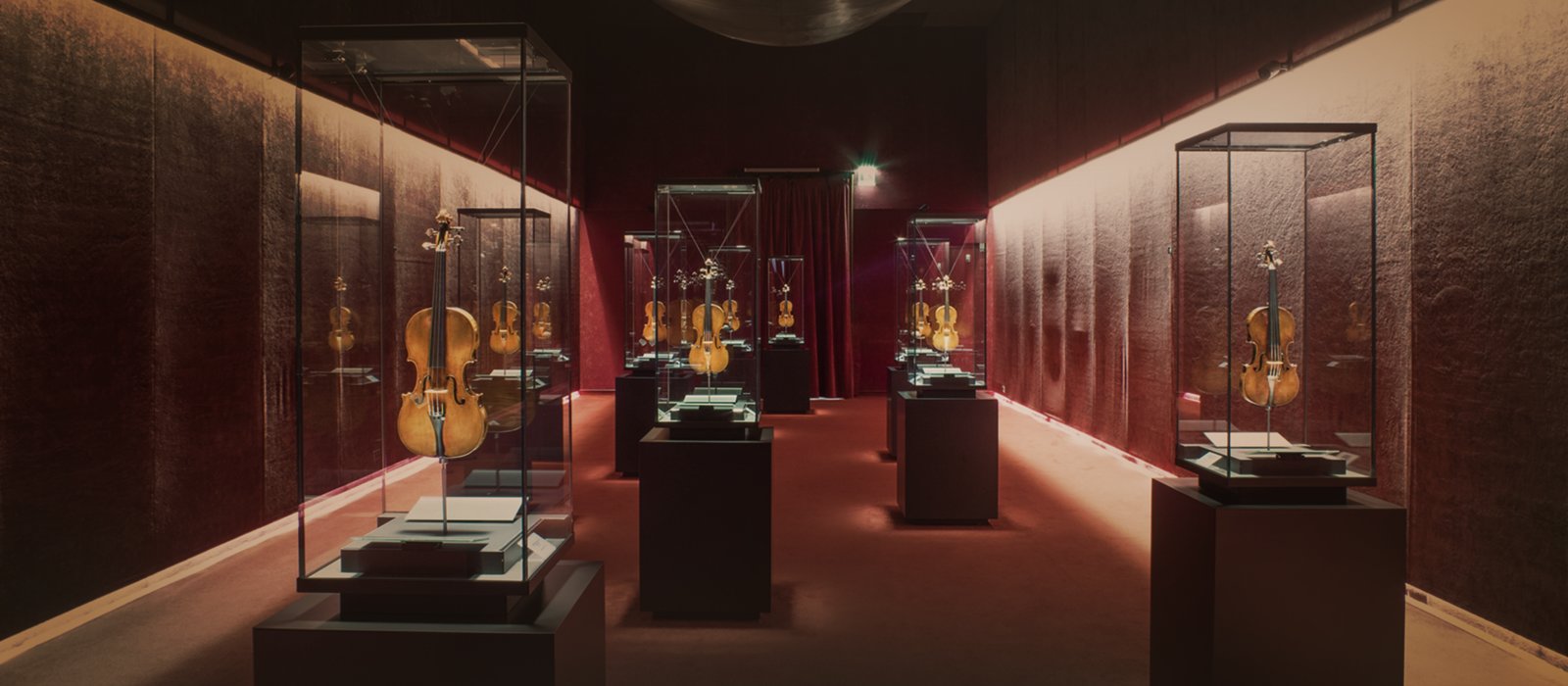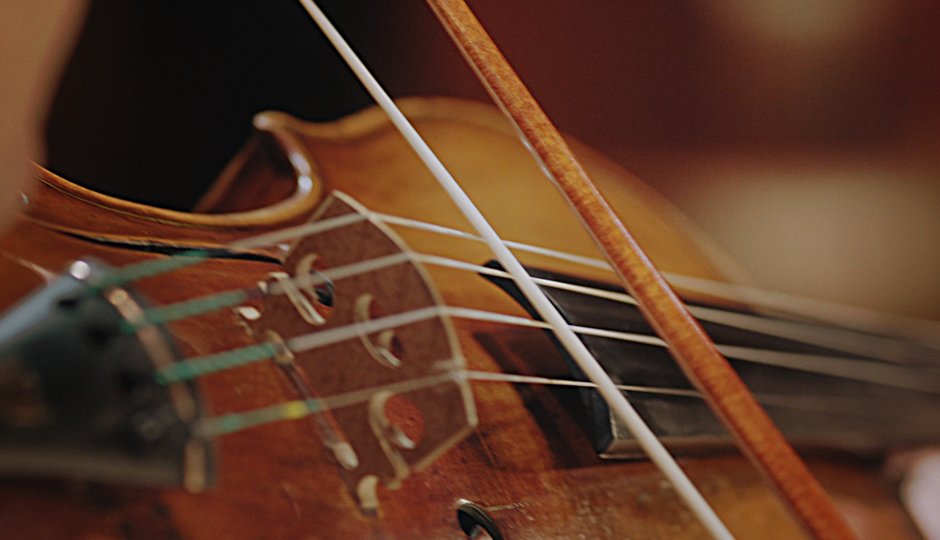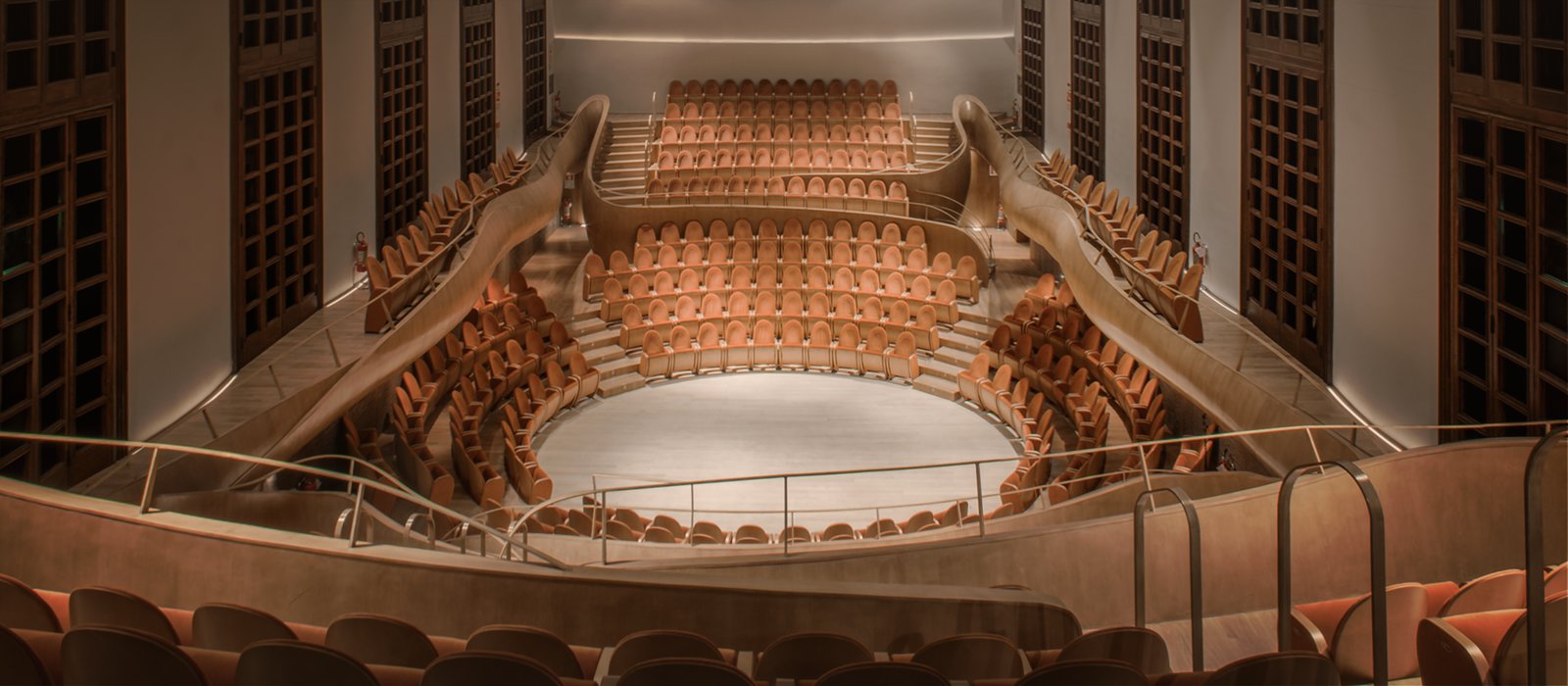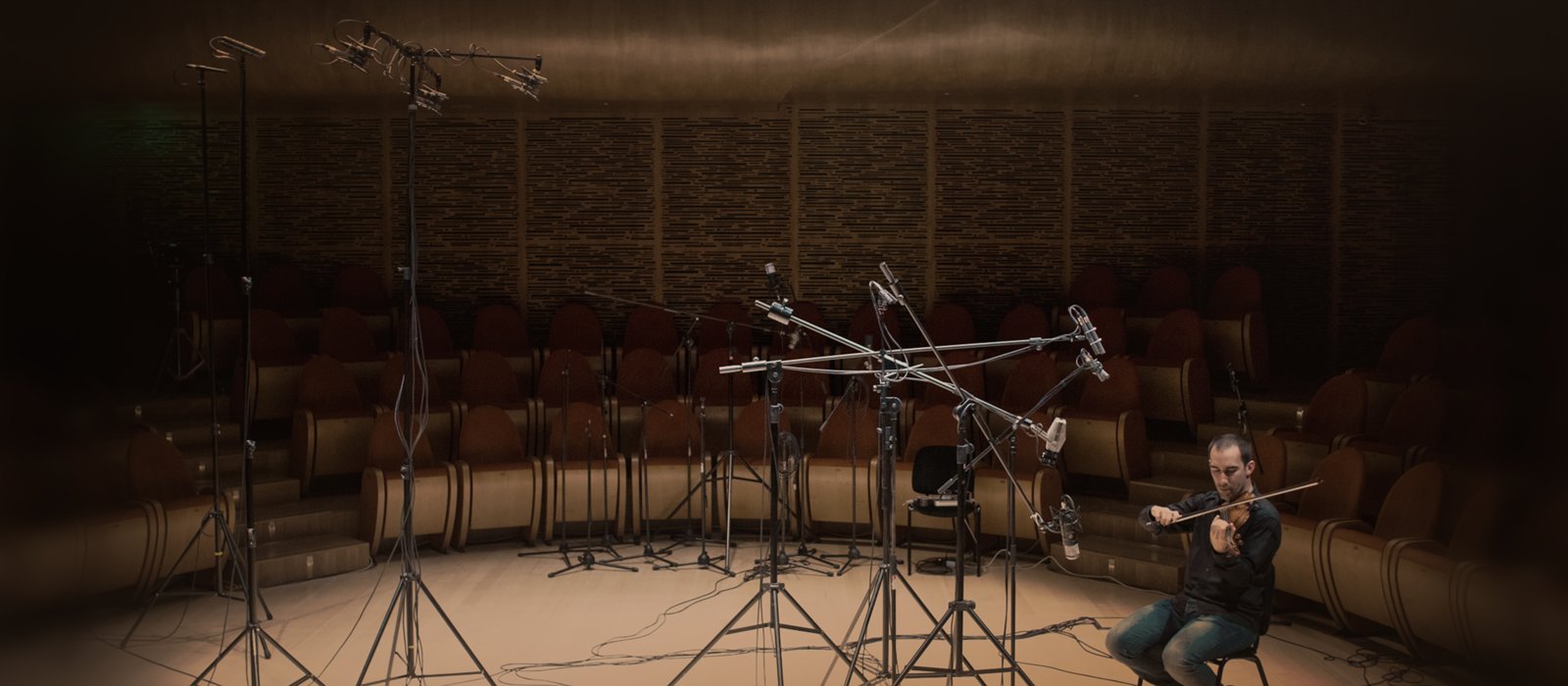Software instruments
Stradivari Violin & Cremona Quartet
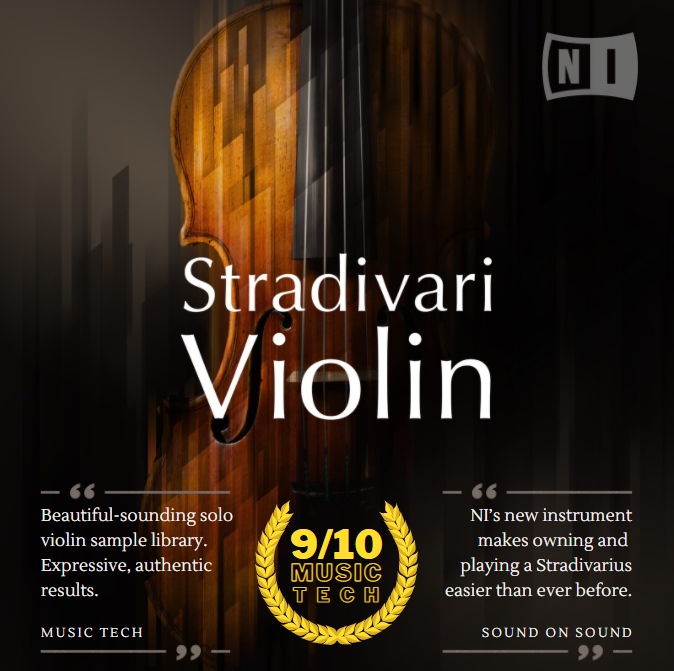
THE MAKING OF A CLASSIC
The software STRADIVARI VIOLIN and CREMONA QUARTET are the culmination of several years of collaborative planning and execution by Audiozone Studios, e-instruments, Native Instruments, and the Museo del Violino in Cremona, Italy.
The museum launched the project to digitally preserve the iconic historical instruments in its collection while enabling a new generation of contemporary musicians to use them in their work.
Behind the scenes of aN iconic strings
The recreation of Antonio Stradivari’s “Vesuvius” violin from 1727. Recorded in the heart of Cremona, the birthplace of Stradivari and the very auditorium designed to hear its sound, the Auditorium Giovanno Arvedi.
The meticulous recreation of this iconic instrument makes playing the sound of Stradivari a reality, in more ways than one. Not only does the high-quality sample content preserve the sound of this one-of-a-kind instrument for future generations, but also packs the mastery of this historic violin into a powerful instrument for modern composers.
Go behind the scenes to see how Stradivari’s ‘Vesuvius’ violin was recorded in Cremona, the same Italian town where it was built in 1727. Discover the extraordinary measures taken to ensure that the instrument’s unique sound was flawlessly captured in the Auditorium Giovanni Arvedi, and find out how the team at e-instruments transformed the samples into a fully playable music production tool. Now the legendary tone of Native’s STRADIVARI VIOLIN is joined by the full CREMONA QUARTET, with Stradivari cello, Amati viola, and a Guarneri second violin.
Go behind the scenes to see how Stradivari’s ‘Vesuvius’ violin was recorded in Cremona, the same Italian town where it was built in 1727. Discover the extraordinary measures taken to ensure that the instrument’s unique sound was flawlessly captured in the Auditorium Giovanni Arvedi, and find out how the team at e-instruments transformed the samples into a fully playable music production tool. Now the legendary tone of Native’s STRADIVARI VIOLIN is joined by the full CREMONA QUARTET, with Stradivari cello, Amati viola, and a Guarneri second violin.
Tap into the authentic sound of a treasured instrument from the world’s most renowned violin maker. Built in 1727 by Antonio Stradivari, the ‘Vesuvius’ violin embodies the Italian master luthier’s unparalleled skill. STRADIVARI VIOLIN captures the sound of this historical instrument in painstaking detail, as played by master musicians in the rich acoustic environment of Auditorium Giovanni Arvedi, Cremona. Chromatically sampled notes, phase-aligned velocity crossfades, performance-captured vibrato, a wealth of articulations, and mixable mic positions enable you to produce highly expressive, realistic solo strings with a unique timbre famous for 300 years.
Audio
Video
Refined strings collection
CREMONA QUARTET brings together four of the world’s most valuable string instruments. Featuring phase-aligned stereo samples and performance-captured vibrato, plus extensive chromatic sampling of 20 articulations, every quirk and nuance of these historic treasures is now available to producers via a wealth of cutting-edge parameter controls.
Known as the birthplace of strings, the Italian city of Cremona has a long and special history. Built hundreds of years ago with wood from surrounding forests, each instrument has its own unique personality, and together their sound represents the heart, soul and magic of the region. A collection of four cherished string instruments dating back to the 1600s, CREMONA QUARTET captures and preserves every detail of their rare characteristics.
featured
Human Vibrato
The e-instruments innovation of performance captured vibrato takes the recording of a professional violinist’s vibrato technique, then reapplies the behavior of the vibrato parameters to the sample, allowing you to automate or control in real-time, resulting in full and realistic control for an expressive and natural sound.
Articulations
The numerous articulations recorded include long, short, expressive, dynamic, and special articulations, all with up to three legato transitions. The adaptive Virtuoso articulation intelligently combines multiple articulations in real-time using the velocity, note, and pitch bend information sent from your MIDI controller performance.
True Solo Violin
Every single note of the Stradivarius violin has been painstakingly sampled at different dynamics and phase-aligned in stereo across multiple microphones. This ensures that all dynamic transitions are free from any phasing artifacts and dynamic changes over long legato transitions, from the softest pianissimo to the most forceful fortissimo, are indistinguishable from that of a real violin.
Highly Realistic
Play highly realistic, expressive phrases with phase-aligned velocity crossfades and performance-captured vibrato.
Shape Your Sound
Two Kontakt instruments provide a choice between Multi-Mic and Stereo. The Multi-Mic option provides a mixer within the UI offering control over the “close”, “mid” and “far” audio fields. The Stereo offers a stereo mixdown of all three. This gives the player flexibility and customization over the sound when mixing, or a more CPU and RAM efficient instrument for maximizing workflow when composing.
Choose Your Timbre
The “Smart” position algorithm will select the fingerboard position that a professional violinist would most likely choose to play a musical phrase. The “Low String” and “High String” options allow you to determine the timbre you wish to get from the violin, forcing a lower or higher string to be played. The lower string will result in a more mellow timbre, whereas forcing a high string will create a brighter, clearer timbre.
Recorded in details
These instruments were made by the finest luthiers in history. With each articulation of every note played by virtuoso performers in Cremona’s Auditorium Giovanni Arvedi, and recorded in exceptional detail, their sounds are now immortalised for contemporary productions.
AN EXTRAORDINARY RECORDING PROCESS
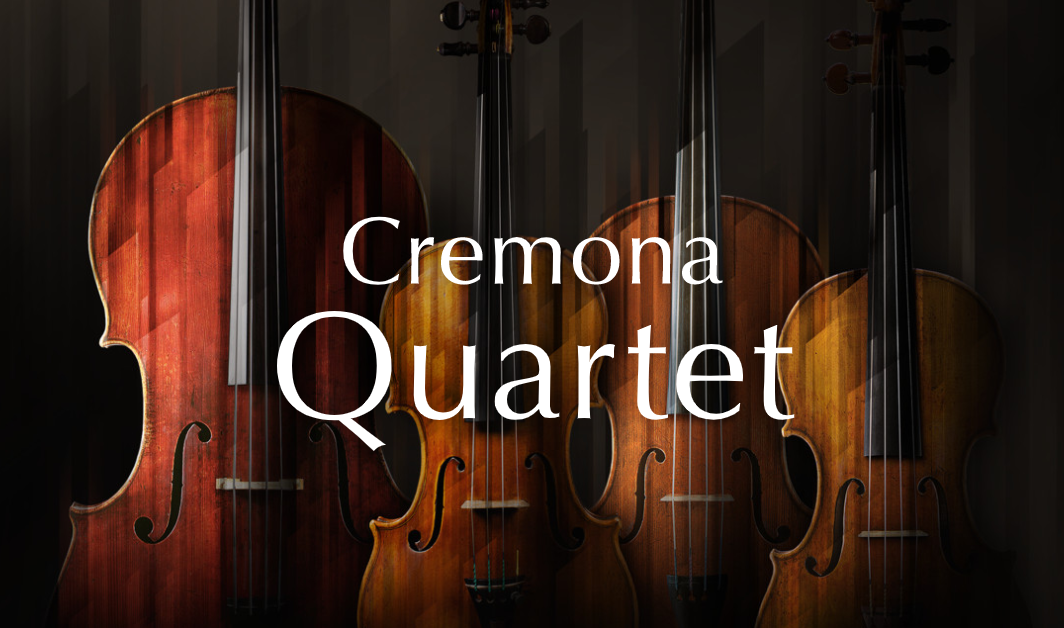
The sounds of CREMONA QUARTET were captured using a bespoke array of microphones and preamps, placed in a specially designed acoustic environment. Even the local people of Cremona played their part, with all traffic near the auditorium stopped for the duration of the recordings, to ensure that no external noise could interrupt the process.
get stradivari violin and cremona quartet now
